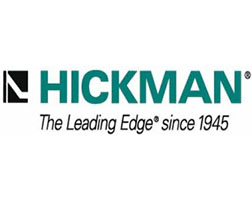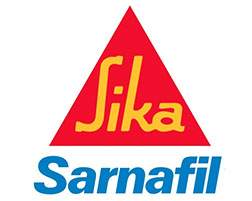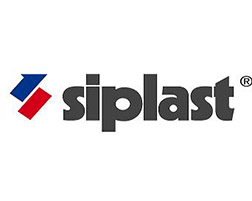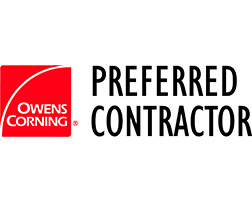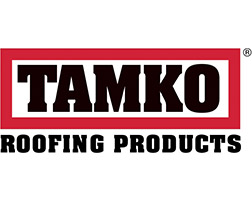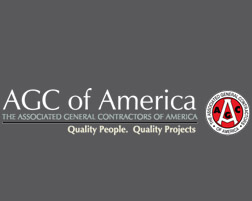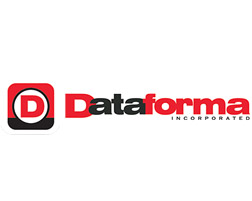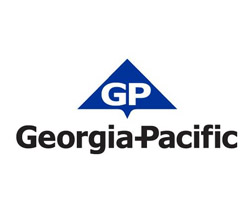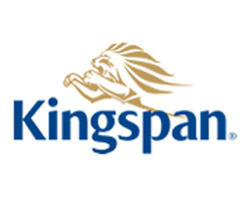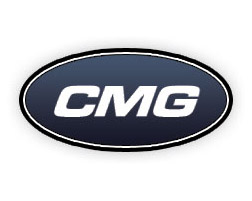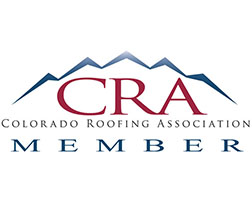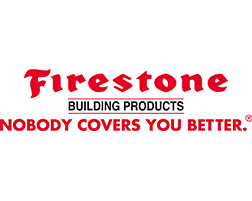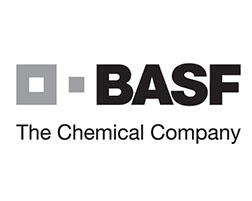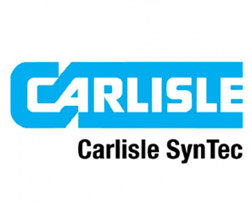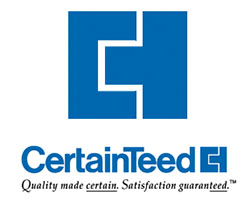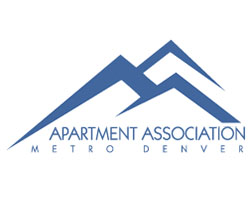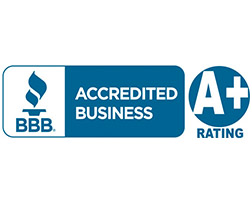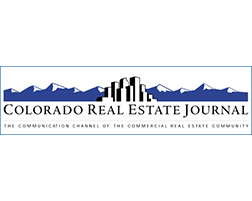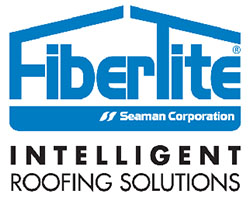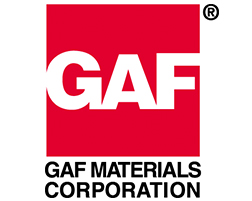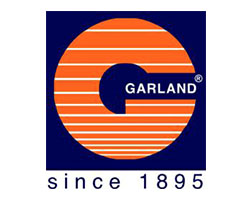What Temperature is Too Cold to Put On a Roof?
There’s nothing worse than a roofing emergency in the dead of winter — the cold is getting into your property, the snows are on the way (or already here), and roofing contractors are hesitant to come and help you out… but what temperature is too cold to put on a roof?
Well, although no one – save the man in red – enjoys being up on a roof battling against bitter winds and slippery surfaces, it’s not just a distaste for bad weather that gives us pause.
It’s actually more to do with the installation process and the materials we use.
A lot of people don’t realize it, but temperate weather is absolutely essential to the proper installation of many types of roofs. Ignoring this will only lead to further roofing emergencies, more stress, and, of course, more expense.
Let’s discuss the matter in more detail, so you’re never caught out when old Jack Frost rolls into town.
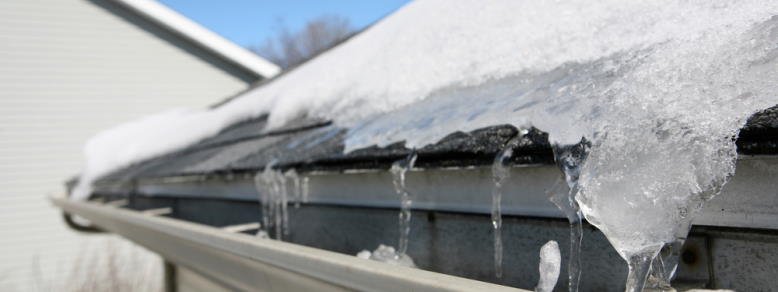
When is it Too Cold to Roof?
You may be wondering what temperature is too cold to put on a roof? Even if the wind is mild, the snow is yet to fall, and all have the correct safety equipment to get the job done safely, 30° Fahrenheit is considered too cold to perform repairs or install a new roof.
In fact, you’ll find that most roofing contractors draw the line at 40 degrees F, as this marks the industry-standard warranty threshold of most roofing materials.
This can, of course, be infuriating when you need a quick fix, but disregarding these warranties can be irresponsible, and may leave all involved parties out of pocket.
Why Is it Problematic to Roof In Cold Temperatures?
What temperature is too cold to put on a roof? There are three main reasons why attempting to roof in temperatures below 30 degrees F is a pretty bad idea.
Materials
The top layer of most roofs is composed of little tiles known as asphalt shingles. They’re durable and easy to work within temperate climates, but when the knee-knocking weather comes around, they become brittle, liable to snap or crack during the installation process.
But it’s not just asphalt shingles that hate the cold, other common roofing materials, such as concrete tiles, clay, and EPDM rubber membranes are also easily compromised in sub-zero temperatures.
Installation
To install shingle roofing, you need to form a base layer and an exterior layer. The base layer is secured to the roof deck with nails, which can be an issue if the surface or air temperature has rendered them brittle, and that’s not even the real trouble.
The top layer of shingles is fitted to the base layer with a thermally activated sealant. This sealant needs the heat of direct sunlight to cure properly and form a strong, long-lasting bond.
Without a sufficient amount of heat, the shingles will never fully adhere to the sealant, and strong winds could tear them away, revealing the under-layer. The threshold for being too cold for roofing is below 30 degrees F.
Rainwater and snowmelt will then seep into the attic via the nail holes in the first layer of shingles — not good!
Labor Difficulties and Expenses
Is it too cold to roof during winter? Due to the nature of the job, when the chill rears its ugly head in wintertime, roofing businesses are often left with no other choice but to increase their rates.
We all have to take the proper precautions to ensure our safety during a cold-weather project. These measures include…
- Clearing snow or ice from the work area
- Wearing heavier boots and protective clothing
- Working slowly to avoid mistakes, protect materials, and minimize risk
- Properly venting the attic below
- Checking for and unveiling hidden hazards such as skylights
- Taking breaks to sufficiently rehydrate and improve focus
- Possibly splitting the job into smaller sessions if the weather becomes too dangerous to work through.
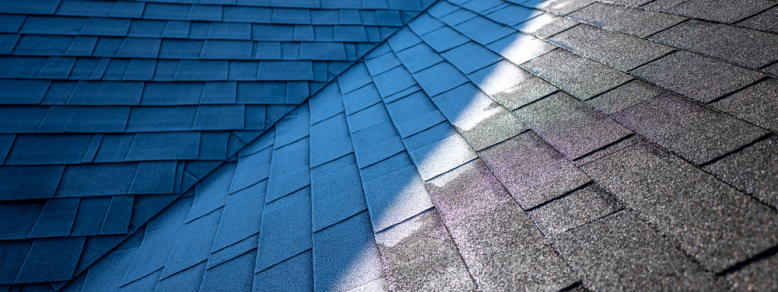
Is Putting on a Roof in Cold Weather Completely Out of the Question?
As long as the weather isn’t so extreme that it would be dangerous to do so, it is possible to roof with the temperature-sensitive materials mentioned earlier, but it’s an exceedingly tough job.
Not only will all involved have to work slowly and with a light touch, but all materials will also have to be hand sealed with a cold-weather adhesive, as thermal sealant is no longer an option.
Things are a little easier if a roof requires metal, wood shingles/shakes, or slate, as these materials do not need to be glued in place, rather, they’re nailed to the roof bed, but it can still be a complex and unpleasant task in cold weather.
Is Roofing in Cold Weather Worth It?
We take pride in our work here at B&M Roofing, and we’re not happy unless you’re happy. You deserve our very best efforts, but when nature is working against us, we can only do so much. If at all possible, it’s much better to wait for a warmer time of year to repair, install, or replace a roof.
Check out a full list of our services here.
What’s the Best Time of Year for Working on a Roof?
The best time of year for roofing is either spring or autumn. These are the mildest of the seasons, neither too hot nor too cold, and the weather is often stable for days on end.
For asphalt shingles, manufacturers typically recommend waiting for 70–80° heat, and not just for installation, but for a few days after the fact as well, just to be sure the sealant has fully activated, and your roof is as robust as it could possibly be.
When is it too cold to roof? Temperatures below 30 degrees F are considered too cold for thermally-activated sealant to perform its job correctly.
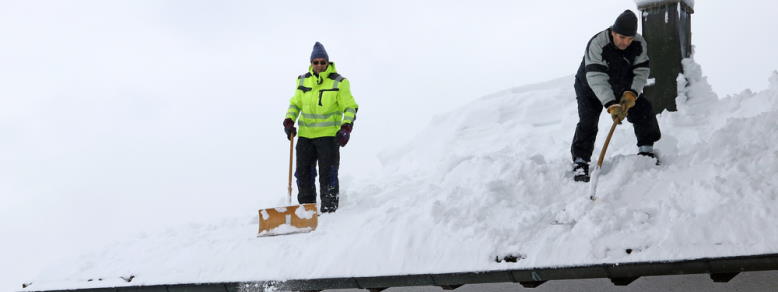
Roof Maintenance: Winter Checklist
Here’s what you can do to make sure you’re ready for the winter in plenty of time
- Contact us for a free inspection and estimate on any work that may need doing.
- Check that there are no blockages in your gutters and that water is flowing freely.
- Check your attic is sufficiently insulated.
- Check your roof for visible cracks, missing shingles, and areas that could develop ice dams.
Cold Weather Roof Emergencies: What Are Your Options?
No matter how prepared you are, some incidents are unavoidable – and winter can come with its own set of roof problems.
Perhaps a tree fall has caused damage to your roof, or you missed a loose shingle during your checks… whatever the issue, here are some pro-tips for getting through this trying time…
- Get yourself and your family to safety. If you have somewhere else you can stay for a while, do so.
- Cut off the power supply to the affected area. I’m sure we don’t need to tell you that moisture and electronics don’t mix, so if your roof is compromised, get them out of there, or at the very least, shut them down.
- If it’s a minor leak, you can try and stop it temporarily.
- Call us! With over 70 years of experience in the roofing industry, if there’s anybody capable of conquering the bad weather and saving your home from further damage, it’s us. We’ll send out our very best to assess the issue, and even if the weather is too extreme for us to make immediate repairs, we’ll be able to advise you on what to do next.
B&M Roofing Colorado: Here to Help
So, what temperature is too cold to put on a roof? Well, roofing in sub-zero temperatures is always to be avoided whenever possible, but we’re not going to abandon you in your time of need. If the worst does happen, and you’re left with a serious roofing issue in the dead of winter, we’ll do everything in our power to help you out.
However, the best course of action is to schedule regular maintenance with B&M Roofing in spring and early fall, so we can winter-proof your home well in advance, and you can enjoy the holiday season worry-free!
How to Hang Lights on Gutters With Guards
It’s easy to see why opting for a quality set of gutter guards can be highly beneficial for your home.
If you were to leave your gutters without guards, leaves and debris can start to build up in your gutters. This matter will decay over time, and can even clog up the gutters so that they can’t drain properly.
These will be especially useful during the fall and winter months when the leaves start to shed from the trees. If you have a lot of trees in your backyard, and particularly around your gutter, then you will need to have gutter guards installed to keep everything running smoothly.
The one time of year where gutter guards can complicate things is of course around the Christmas season. We all like to hang festive lights on our homes to celebrate the Christmas spirit. However, if you have gutter guards in place you may be asking yourself, how to hang lights on gutters with guards?
Today, we’re going to show you how you can hang lights on gutters with gutter guards. The good news is there is a variety of methods that you can use to keep things festive without compromising the integrity of your guttering.
How to Hang Lights on Gutters With Guards
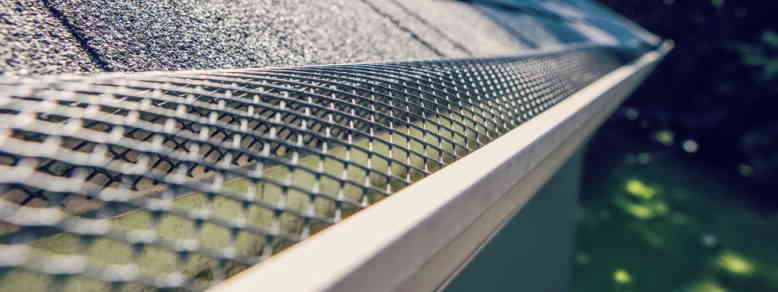
How To Hang Christmas Lights On Gutters Without Clips
Below are some of the ways on how to hang lights on gutters with guards in place.
It will, of course, depend on the style of gutter guards you have in place. However, at least one of the below methods should help you to attach your festive lights to your guttering without you having to remove the gutter guards to do so.
Christmas Hooks
One of the best methods is of course to invest in a quality set of Christmas hooks to help with hanging Christmas lights on gutters without clips.
These will essentially feature a length of wire that you can hook into the small holes of your gutter guards. These will then be able to support a variety of Christmas lights from standard fairy lights to icicle lights.
These types of Christmas hooks are perfect for gutter guards that feature a mesh, screen, or perforated design. The hooks can seamlessly fit into the smaller holes of your gutter guards without interfering with their usefulness. The hooks should measure around 3.5 inches, which should be more than enough length for your Christmas lights.
You can of course create your very own version using an old set of metal hangers.
However, you may find it easier to purchase a ready-made set that you can simply slide into your gutter guards.
Leaf Screen Clips
If you have a leaf screen type of gutter guard, then you can opt for a style of clip to help with hanging Christmas lights with gutter guards.
The great thing about leaf screen clips is that they can support the vast majority of Christmas lights. So if you want a more universal clip that will be able to hold your Christmas lights without damaging your leaf screen, this is the type that you should opt for.
This will of course involve climbing your ladder to slide them into place, so remember not to lean your ladder against your guttering. This will help to keep your guttering from becoming damaged.
All-In-One Clips
Depending on the style of gutter guards that you have in place, you might not be able to get any hooks or clips into the guard itself.
In this case, you should opt for a style of clips that you can slide under the shingles of your roof. This can help to keep your gutter guards intact, as you won’t have to fuss around with wiggling hooks into the holes of your gutter guards.
Simply slide the clips under your shingles, above the gutter guards, and you will be able to hang your Christmas lights off these. So while it’s worth noting that these types of clips will ensure that your Christmas lights are placed on top of your gutter guards, instead of having them dangling from your guttering, it still provides a relatively easy option for installing festive cheer.
Self-Adhesive Light Clips
Perhaps you don’t have large enough holes in your gutter guards for Christmas hooks, or can’t fit clips under your shingles.
In this case, you should opt for self-adhesive light clips. These can be secured underneath your guttering using the stick side of the clips. You can then hang your Christmas lights from the hooked end.
The best thing about these types of clips is that they can be used virtually anywhere on your roof. You can place them under your guttering, on the outside of your guttering, or even along the side of your home.
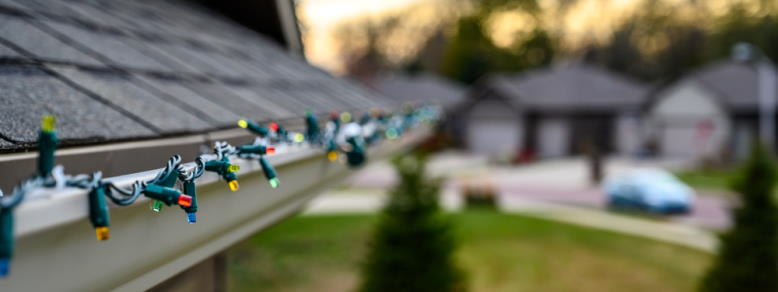
How to Hang Christmas Lights in Gutters Without Clips
While it can be frustrating trying to secure your Christmas lights to your guttering, it’s best not to remove your gutter guards to do this.
You should also not resort to hammering nails into your guttering or home just to hang your lights from them. This could impede the effectiveness of your guttering or guards, which we’re sure you don’t want to do.
To effectively hang your Christmas lights from your gutters without using traditional clips, you should instead opt for either Christmas hooks or self-adhesive clips. It will of course depend on the style of gutter guard that you have in place.
If you have holes or mesh on your gutter guards, then you should opt for Christmas hooks that can easily fit into these. You shouldn’t have to force these to remain in place, as you could damage the gutter guards.
Alternatively, you should opt for self-adhesive Christmas light clips that can be secured to the outside of your guttering without damaging them.
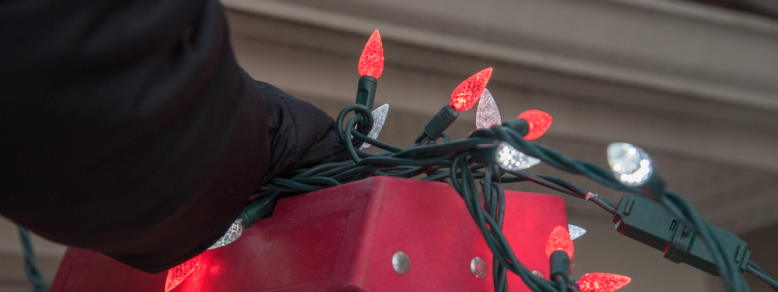
Happier Holidays with Hanging Lights
So there you have it!
Gutter guards are definitely worth the investment so as to keep your guttering free from leafy debris. The methods above show how to hang lights on gutters with guards without any damage.
But just because you have gutter guards in place it doesn’t mean that you have to go without your usual festive cheer during the Christmas season.
Installing Christmas lights to your guttering using some of the methods that we have gone into more detail about above will be super easy and effective.
Want to know more about gutter guards and how easy they will be to install on your guttering?
Get in touch with your questions!
Is an Ice and Water Shield Necessary?
The roof of a home is meant to protect the inside from nature’s elements. That’s why it’s important to ensure your roof does its job properly, and that ice and water are directed towards the proper gutter and drainage systems. However, extreme and unexpected weather might cause water to pass through the gaps between your shingles.
Installing an ice and water shield to your roofing system is essential in keeping your home dry and protected from damage. This extra layer of protection is important if you live in areas that receive significant amounts of precipitation and snow coverage, like Colorado. However, it’s also beneficial for homes in areas that don’t typically see instances of extreme weather.
So you might be wondering, what can an ice and water shield do for me and my home? Is ice and water shield necessary? We’ve outlined everything you need to know below.
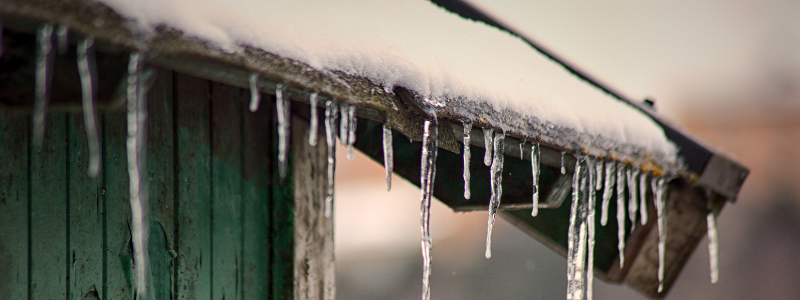
What is an Ice and Water Shield?
An ice and water shield is a waterproof self-adhering membrane made from rubberized asphalt. It is installed underneath the shingles of your roof and is designed to protect your roof deck from ice and water damage. This includes damage from ice dams, melting snow, and rainwater.
The peel-and-stick backing bonds to the roof deck, sealing around laps and nail punctures to keep water out. These protectors contain a film made of modified bitumen that attaches to the roof deck forming a watertight seal, so water can’t seep through cracks and crevices.
The slip-resistant top surface also creates better traction, making your home more resistant to strong winds and horizontally-propelled precipitation.
Is Ice and Water Shield Necessary?
Ice and water shielding is necessary for your roof, especially for homeowners in Colorado. This is because much of the state sits above 7000 feet in elevation. However, ice and water shields aren’t only limited to homes and buildings in high-altitude areas. Defending any structure from any type of weather-induced damage starts with the roofing system.
If your home is in an area that typically doesn’t see extreme weather, you might think you don’t require this extra layer of protection. However, if left untreated, all the small damages on your roof can eventually add up, leading to more serious damage.
Being prepared with an ice and water shield installed can reduce the need for constant repairs and extend the lifespan of your roof.
Nature vs. Your Roof
No matter where you live, natural elements can cause damage to your roof. These types of damage include:
- Curled shingles
- Cracked shingles
- Interior water damage
- Insulation damage
…and more!
Strong winds and extreme weather can cause horizontally propelled rain, hail, and snow. Shingles are designed for precipitation that falls vertically, but extreme weather can cause shingles to curl and push rainwater underneath into your roof’s foundation.
In places with low temperatures and snow, the accumulated weight of snow on your roof can also crack shingles. This may create more entryways for water to flow inside your home. Additionally, homes in colder climates are more susceptible to ice dams and frozen gutters. Installing an ice and water shield will prevent the chance of leaks from winter-roof damages.
Many home insurance companies don’t cover damages from wind-driven rain or ice-packed roofs. Therefore, it’s in your best interest to prepare and protect your home from any risk of weather-induced damage.
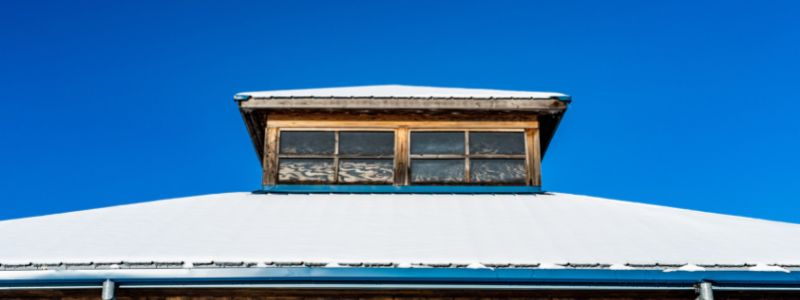
The Dangers of Ice and Water Damage
We know that water and ice can damage your roof. What you might not know is that the resulting water damage can extend to the interior of your home. Water that does not drain properly can work its way under your shingles, into your attic, and further through your insulation, ceilings, walls, and other areas.
If your exterior or masonry is made from natural stone and concrete, too much water exposure will cause these materials to erode. This can cause water to further pass through the cracks on your roof, walls, and possibly the basement of your home.
In colder climates, the formation of ice dams and heavy snow loads can cause severe damage to your roof. It can break off your gutters, loosen shingles and cause water to leak into your home. When water enters the home, it can cause paint to peel off the walls while ceilings and floors can start to warp and stain, becoming very unsightly.
Water entering the home can not only cause several types of structural damage, but it can also lead to mold and mildew to grow on eaves, slidings, and walls. Mold and mildew can result in health problems such as asthma, sudden allergies, and an increase in sinus infections.
Spend to Save
Spending the money on ice and water shielding will help you save money in the long run. Skipping out on the ice and water shield for your roofing system can save you money in the short term, but it will most likely lead to problems that can cost thousands of dollars to repair later on. Roof damage will also impact the insulation of your home, causing you to rely more on your heating and cooling system, increasing your household’s utility bills.
With an ice and water shield, homeowners can save on the cost of constantly getting their roofs inspected for repairs or damages. Roof maintenance can be costly. It can become a dreaded task on your chore list. Opting for an ice and water shield is a more permanent solution if installed correctly. It will greatly reduce maintenance efforts on your end.
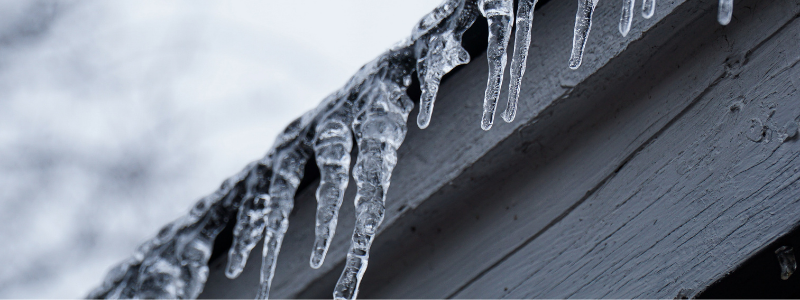
There’s no better way to protect your home (wherever you are in the world) from leaks and water damage than installing an ice and water shield in your roofing system. The shields are durable and effective in keeping your home dry and well-maintained. Because it can be a costly home improvement project, it is in your best interest to consult a professional roofer. Experienced professionals can determine the best ways to keep your roof and your home in tip-top shape. So, if you’re still asking, “Is ice and water shield necessary,” you’ll find that the answer, most likely, is yes!
B&M Roofing: Colorado’s Top Roofing Experts
Since 1947, B&M Roofing has been Colorado’s most trusted group of roofing experts. Our reliable, and well-seasoned team of roof experts are skilled with various roof types and will ensure your roof does its job as a safeguard for your home.
We can assess the current state of your roof, identify repairs and provide you with a reasonable budget. Request a free estimate on our website or give us a call today!
Fall Gutter Cleaning
Fall is a lot of people’s favorite season for a variety of reasons. The weather’s starting to cool down, there are all sorts of great fall activities to do, and, depending on where in the country you live, you could get treated to some incredible colors from the leaves changing.
Although fall means that the leaves are changing into pretty colors, it also means that those leaves are falling and can start clogging up your gutters. If you’re not proactive and don’t take the proper steps to clean these leaves from your gutters, you could run into a lot of trouble. Regular fall gutter cleaning can help prevent any long-term damage to your gutters.
Falling Leaves and Damage
Leaving leaves in your gutters can lead to some serious problems. Gutters have the extremely important role of funneling and removing rainwater from your roof and home. If these gutters can’t do their job, there is a possibility that your home could suffer water damage. At a high enough volume, wet leaves do a great job of acting like a dam, preventing any rainwater from funneling through and down your downspout.
As the water continues to back up, more serious damage can occur. The backed-up water will eventually overflow out of your gutters and can push underneath your roof shingles. This will cause damage to your roof deck over time. This is a very serious and expensive problem to have, as fixing it will require the work of a professional contractor.
One additional problem that can happen from not partaking in fall gutter cleaning will occur when the weather gets cold. Wet leaves can freeze, and since water expands when it turns into ice, this extra pressure can cause your gutters to crack or warp.
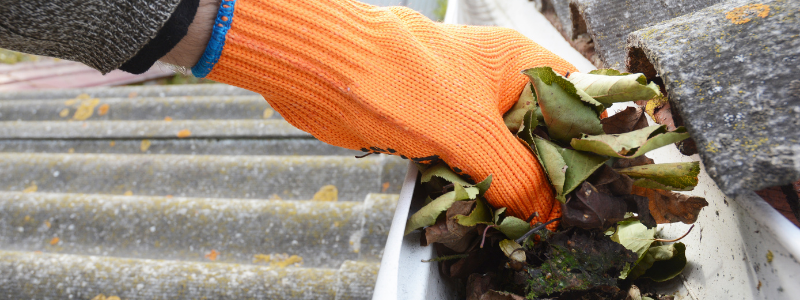
Importance of Fall Gutter Cleaning
Fall gutter cleaning, especially when the leaves are falling off their trees frequently, can help save your gutters and home from the potential issues we’ve detailed above. Although it may not be a fun chore, it is undoubtedly one of the best ways you can protect your home and make sure that your gutters are working properly. Even if you don’t live somewhere with a lot of leaves falling, your home and gutters will still benefit from somewhat regular gutter cleaning.
How to Clean Your Gutters Safely
Gutter cleaning can be an extremely dangerous activity, especially if you aren’t properly trained or don’t know what you’re doing. Often, cleaning your gutters requires either the use of a ladder or going onto your roof. If you don’t know what you’re doing, there’s the potential that you can slip or fall and end up with a serious injury.
Therefore, it’s extremely important to learn how to clean your gutters safely. Down below, we’ve shared a few different methods that you can use to make sure that you’re staying safe while doing your fall gutter cleaning.
Option A: Hire Experienced Professionals
In truth, the way for you to be the safest while getting the leaves removed from your gutters is to hire an experienced professional. This might be the only option you’re comfortable with, especially if you have a two- or three-story home.
This option ensures that you won’t be in danger, and will also ensure that you are getting top-quality gutter cleaning. Depending on the size of your home, physical health, and whether or not you have a fear of heights, this might be the best idea for you.

Option B: Do It Yourself
Performing gutter cleaning yourself is a good way to learn how to take care of a crucial part of your home and to do so while saving money. Down below, we’ve listed out the steps you should follow.
1: Determine what you will need.
Typically, most people will clean gutters by going on a ladder, as opposed to going onto their roof and walking around. Therefore, you’ll want to get a properly sized ladder for the height of your gutters. You’ll also want work gloves, yard debris bags, a garden hose, and gutter sealant in case you find any leaking seams or joints.
2: Practice ladder safety.
If you’ve decided to take fall gutter cleaning into your own hands, it’s imperative that you understand how to safely use a ladder. Typically, this means that you’ll want to have someone else holding and stabilizing the ladder as you’re on it. Additionally, you need to be aware of what angle to set the ladder to the home so that it’s not too vertical or too horizontal. It’s important to move slowly and deliberately while going up and down the ladder, in addition to having the ladder firmly secured.
3: Clear debris from your gutters.
This step is really the main part of the process. Essentially, you will need to go around all of your gutters and use your hands to yank any debris, such as leaves and dirt, out of the gutter. It’s a good idea to wait a couple of days after rain to do this since dry debris will be much easier to remove than wet debris.
4: Flush the gutters.
Once you’ve removed most of the debris, you should use a garden hose to flush the gutters. This way, you’ll get all of the smaller particles out, and your gutters will be nice and clean. It’s important to have someone checking the downspouts as you’re doing this. Check if the water is flowing freely to ensure that there’s no clog in the downspout, either.
5: Complete your gutter cleaning.
Lastly, you’ll want to check for any leaking seams, joints, cracks, or any sort of further damage to your gutters. Depending on the severity of these issues, you could either apply some gutter sealant. If the damage is extensive or severe, you may need to hire a professional to repair your gutters.

B&M Roofing: Colorado’s Top Roofing Company
Cleaning your gutters regularly is a good way to extend the life of your roof. However, roofs, just like anything else in your home, will need to be repaired and replaced eventually.
If you’re interested in installing a new roof for your home or business or having your roof repaired, look no further than B&M Roofing. B&M Roofing are true experts in roofs, having skillfully provided reliable roof coverings since 1947. They can give you a free estimate, & will work with you every step of the way, from determining which roof (metal or not) is best for you, installing your new roof, and providing regular maintenance.
How to Inspect Your Roof for Hail Damage
Summer in Colorado oftentimes means late afternoon thunderstorms and hail. While pea-sized hail is unlikely to do any damage, hail 1” in diameter (quarter-sized) and larger can be detrimental to your roof. If you’ve recently had a storm roll through your area with decent-sized hail, you may be curious to know if there was any hail damage to your roof. Depending on the extent of the damage, you may need some repairs.
There are a few things you need to think about before assessing your hail damage roof. Firstly, you need to ensure that you are safe. That is why hail damage roof assessments are often left to experienced professionals. Secondly, you must know there may not be damage to just your roof, but also to gutters and downspouts. That’s a good place to start when assessing the damage. It’s important to check roof elements such as chimneys and roof vents, as well.
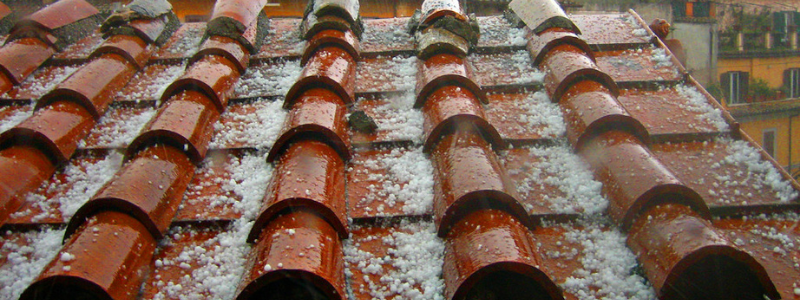
What Hail Can Do to Your Roof
Hail can do a lot to damage your roof. Not only can it damage the roof itself, but it can also damage roof elements like vents, chimneys, skylights, gutters, and more. A hail damage roof can be compromised depending on the extent of the damage. Hail damage to your roof can cause things like:
- Loss of protective shingle granules
- Cracks in shingles
- Exposed sub-surface materials
- Weakened seals
All of these things can lead to leaks in your roof, or worse. That’s why it’s important to be on top of the damage so that you get it assessed and repaired before it becomes a major issue.
Inspecting Your Roof for Hail Damage
Once you understand what hail damage can look like and the effects it may have on your home, you can start to inspect your hail damage roof. However, if you are uncertain about the safety of your inspection or are unsure how much damage was caused, it’s a good idea to call a professional. Here is how to inspect your roof for hail damage:
Safety First
Before you get up on your roof, we want to remind you that safety should be your first priority. Plan on wearing soft-soled shoes or roofing boots for safe walking on your roof. Always check that your ladder is in perfect working condition and bring some chalk to mark up any damaged areas. Never go up on your roof alone, always have someone outside with you!
Start With Obvious Damage
By looking for damage to gutters and downspouts, you can bet that your roof sustained some damage, too. Make your way around your home to take inventory of damage on some of those items. You may also look for damage to window sills, siding, and even your air conditioner.
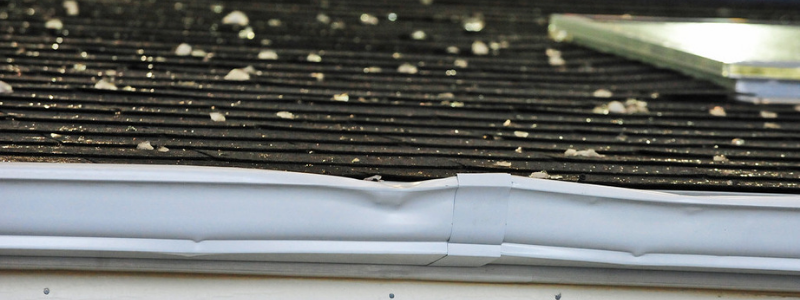
Inspect the Roof Features
Once you’ve inspected damage around the roof, it’s time to get on the roof. In addition to the roof itself, it’s also important to inspect roof features on your hail damage roof that may have also been impacted. Check all of the features that could have sustained damage, like roof vents, chimneys, and skylights.
For hard to inspect areas like chimney covers, or other places where the damage isn’t obvious, there is an easy solution. Bring a stick of chalk up to the roof with you. Turn your chalk sideways and run it over the surface. This will show you where there are dents and divots, thus uncovering hail impact points.
Inspect the Shingles
Hail damage to shingles isn’t always completely obvious. Figuring out the extent of the damage usually takes a trained eye. However, if you are choosing to inspect the damage yourself, here is what to look for:
- Obvious dents or divots
- Random round impact areas
- Dark-colored circles
- Areas where granules have been knocked off the shingle
If granules have been knocked off a shingle, this means that the hail has compromised the integrity of the shingle. This can cause leaks can develop over time. Circle each impact spot that you find with chalk to keep track of the extent of the damage.
When to Call a Professional
It is important to understand that roof inspection and repair are not things that can always be safely and easily done by anyone. Roofing professionals are trained and experienced in inspecting damaged roofs, assessing the damage, and coming up with an appropriate plan for repair. Whether a single shingle is damaged, or the entire roof and its features have been compromised by hail, it’s best to leave the assessment to experienced professionals.
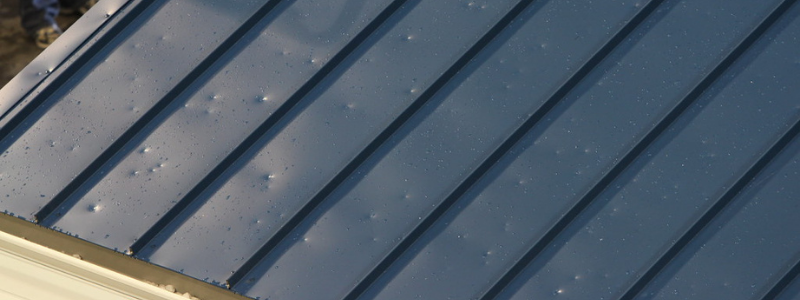
How B&M Roofing Can Help
B&M Roofing has been in the business of repairing roofs since its inception in 1947. We specialize in roof analysis, leak identification, preventative maintenance, repair, and more. We even offer emergency repairs for when your roof has been seriously compromised by harsh Colorado storms.
Once you’ve done some hail damage inspection of your own, it’s time to call in some experts to take a second look to determine what your next step will be. The roofing experts at B&M Roofing are happy to provide you a free estimate after a hail storm. You can contact us by calling or by submitting a free estimate request online!
Passive Roof Vents
Roof vents are necessary for your home or commercial property. They protect buildings in many ways. Without roof vents, your home or office may be too hot in the summer and too cold in the winter. This makes your heating/cooling system work overtime. There are many different types of roof vents you can use, including passive roof vents.
Inadequate roof ventilation may also result in unhealthy living conditions. When deciding on what kind of roof vents will be best for your property, it is important to know and understand your options.
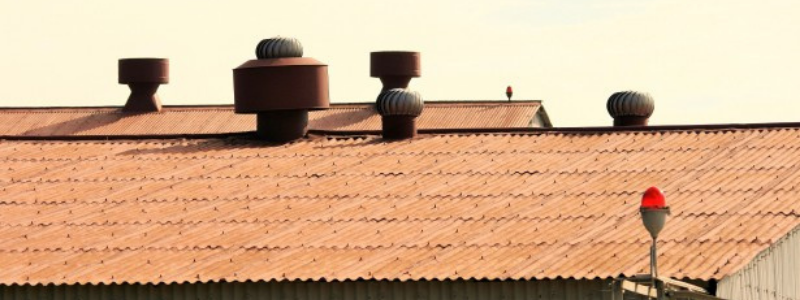
What are Roof Vents?
Roof vents or exhaust vents are installed at the top of the roof. The roof ventilation in your property lets air circulate through the attic of the building. Regulating the air in this space can have many benefits.
Why are Roof Vents Important?
Roof vents are mainly installed to allow heat, hot air, moisture, and odors to escape from your attic. Roof turbines have blades that spin in the breeze. This motion pulls air up through the house into the attic and out through the vents.
Roofing ventilation systems work year-round. They balance the intake of cool air and the outflow of warm air. Roof vents are often located at the peak of your roof because hot air accumulates there.
Roof Vents Year-Round
Combined with attic fans, roof vents can significantly cut the cost of heating and cooling your home. Warm months intensify heated air because outside temperatures rise. If your home is not properly vented, your air conditioner may get overloaded trying to replace warm air with cool. During cooler months, your heating system produced warm aid. This heated air mixes with water vapor from activities like cooking, showers, and bathing. If this warm, moist air lingers in your attic, it can cause mold, mildew, damage to roofing studs, and even ice dams when temperatures drop outdoors.
Roof Vents for Protection
Roof vents can also protect your home from costly structural damage caused by ice dams, moisture buildup, tapped heat and mold, or poor indoor air quality. Poor ventilation can eventually cause shingles to fail, resulting in roof leaks. If this occurs, the structure of your building may be compromised.
Roof vents extend the life of your roof. This can allow for huge savings. Vents also regulate the temperature of your property. Thus, they reduce energy costs. If an attic is well ventilated, it will reduce the chances of rot, mildew, mold, and peeling paint.
Types of Roof Vents
The goal of roof vents is to equalize the inflow of cool air and the outflow of warm air. Multiple types of roof vents used in combination can achieve this effect.
Intake Vents
Intake vents improve exhaust vents’ ability to reduce attic heat. They draw in cooler air from the outside. As the cooler air enters, it forces warmer air to rise and exit.
Intake vents should be evenly distributed along the roof of the house. The most common intake vents include:
- Soffit vents. These are placed on the material under the eaves or between the joists on your roof.
- Ridge vents. These are installed at the peak of a sloped roof. They allow warm, damp air to escape from the attic.
- Gable vents. These are installed in the two gabled ends of your attic. Ideally, they are placed so they take advantage of the prevailing winds. Depending on the wind, gable vents can serve as both intake and exhaust vents.
Exhaust Vents
Exhaust vents are located at the top of the roof. They provide an easy exit for heated air, odors, and moisture to escape from the attic. If this air does not get out, the result can be a buildup of heat and moisture. Besides poor air quality, roof damage and peeling paint may occur.
Common types of exhaust vents include the following.
- Ridge vents run along the top edge of the roof. When the wind blows across their ridges, this results in uniform air movements.
- Roof turbines have blades that spin in the wind. This pulls air through the intake vents. Roof turbines are evenly spaced across the roof.
- Static roof vents are often called roof louvers. These fit into the highest peaks of a roof.
- Gable vents are one type of louvered vent. Depending on wind direction, they may be intake or exhaust vents.
Are Fans Necessary?
Fans on ridge or gable vents help blow hot, humid air out of an attic. Attic ventilation fans are energy-efficient and don’t cost much to operate.
They help cool air and prevent hot air from remaining in your attic while pulling in cool air.
Attic ventilation fans tend to be quite energy-efficient. Many of them are solar-powered and require no additional electrical work.
However, some argue against attic ventilation fans because:
- Attics with good insulation shouldn’t need fans.
- Fans can cause loss of conditioned air if the attic is not airtight.
Why Choose Passive Roof Vents?
Passive roof vents use natural elements like wind to move the air through the attic and out of your home. They do not rely on fans. Thus, they are environmentally friendly.
Most homes have some degree of passive attic venting. Cooler air enters through soffit vents. Air that heats up inside the attic rises and exits through gable vents or ridge vents. Warm air leaving the attic creates negative pressure sucking in cool air.
There are several advantages to using passive roof ventilation:
- You don’t have to buy any fancy equipment.
- Passive roof ventilation is quiet.
- When you do not rely on fans, you reduce your carbon footprint.
- Passive roof vents result in cleaner air.
- Maintenance and replacement costs stay low.
- Passive roof vents produce more consistent heating/cooling of the air in the building.
- Energy bills will be lower.
- Natural ventilation provides more efficient humidity control.
Using the most effective combination of roof vents can improve your home’s livability. Well-selected and maintained roof vents can reduce your energy costs. They can also increase the life of your roof and reduce costly repairs.
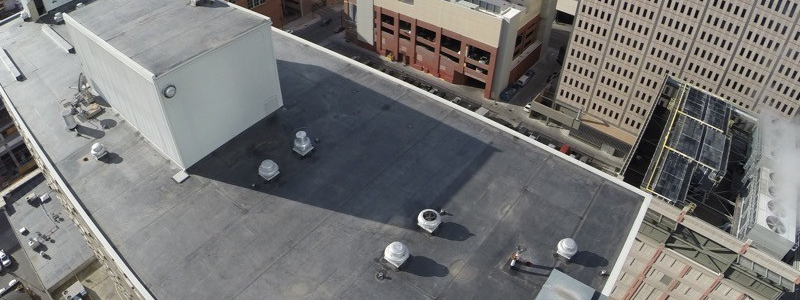
How Can B&M Roofing Help?
It is important that roof vents be installed properly and checked regularly by roofing professionals. Colorado’s many days of sunshine, brisk winters, and high winds create unique weather challenges. B&M Roofing has been installing, inspecting, and repairing roof vents in Colorado since 1947. Our roofing specialists are proud to provide their valued clients with reliable, meticulous service. B&M roofers are experienced, licensed, and insured. We have a guaranteed commitment to excellence. To let us know how we can help you choose the most effective roof vents and placement for your home, contact us today!
Are Gutter Screens Worth It?
Clogged gutters can be a nightmare. They can lead to overflowing, which can then lead to water intrusion, which further leads to extensive, and expensive, water damage within your home. Gutter screens, also called gutter guards, are designed to sit on top of your gutter to prevent debris from falling inside them. This allows for rainwater to pass through freely, as the screens prevent clogs and blockages.
There is a variety of different kinds of gutter screens available on the market. Gutter screens can be made from:
- Vinyl
- PVC
- Steel
- Aluminum
Each type is engineered differently and has its own pros and cons. The most common type of gutter screen is a rounded screen that attaches to shingles on a roof, covering the gutters. The mesh captures debris and prevents it from entering the gutters.
Another type of gutter screen design is made from micro-mesh stainless steel, which allows rainwater to run through small holes while blocking leaves, sticks, and debris from falling in. Other types of gutter screens include surface tension guards, brush guards, and foam guards.

So, you’re probably asking yourself: are gutter screens worth it? The question is more complicated than it seems.
Depending on which type of gutter screen you choose, they can become quite costly. However, they can also significantly reduce gutter maintenance efforts and prevent blockages.
To help answer the question, “Are gutter screens worth it,” we’ve put together some of the benefits and drawbacks of having them installed on your home. Here are some of the pros and cons.
Are Gutter Screens Worth It: Pros
They make gutters easier to clean.
Gutter screens do a very good job at preventing the accumulation of branches, leaves, and shingle granules in your gutters. Therefore, you’ll find yourself having to clean your actual gutters less often. Gutter screens themselves must still be cleaned and maintained to keep them working efficiently. Cleaning gutter screens involves removing accumulated materials off the guards and potentially hosing them down. Gutter screens reduce the time it takes to clean your gutters. They are especially worth it if you have large trees surrounding or near your home.
They reduce ice dam formation.
Since gutter screens direct water away from your home and prevent the accumulation of stagnant water, the chance of ice dams forming inside the gutters is reduced. This is especially true if your gutter screens are heated. Ice can damage your gutter system and can be quite costly to repair. Heated gutter screens might be beneficial if you live in areas with harsh winters with cold temperatures and lots of snow.
They help to prevent animal infestation.
Gutter screens can prevent wildlife such as squirrels, birds, mice, and insects from nesting and breeding in your gutters. This is because they reduce the amount of stagnant water sitting inside your gutters.
Stagnant water attracts vermin and insects which can lead to infestation inside the home if the problem is not handled immediately. Gutter screens also work as a physical barrier for rodents who can navigate their way inside the home.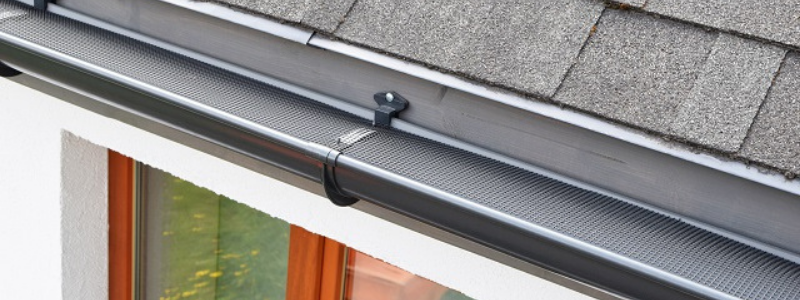
Installation can be easy and inexpensive.
Gutter screens can be easily installed without altering your existing gutter system. These are some of the most affordable gutter guard options. The price of gutter screens usually starts under $1 per linear foot, depending on the material used.
They prevent blockages and clogs.
Because gutter screens reduce the amount of debris that collects inside your gutters, the chances for clogs and blockages are diminished. Blockages and clogs can lead to water damage, erosion, and the formation of rust. It can also lead to water entering the home, causing mold and mildew to grow. Additionally, blockages and clogs that lead to overflowing can result in unattractive water stains on your home’s exterior.
Are Gutter Screens Worth It: Cons
Gutter screens need cleaning, as well.
Yes, it’s true gutter screens remove a huge load of cleaning your gutters manually, but it doesn’t remove the need for maintenance entirely. It is important to clean your gutter screens every so often, if they are left uncleaned, debris can accumulate on the screen and prevent water from passing through the mesh. Additionally, the added weight of debris build-up on your gutter screens can cause your actual gutters to become loose and sag, or even fall off completely.
They might not be effective if not installed properly.
Gutter screens are extremely effective when installed properly. However, poorly installed gutter screens might end up being a waste of your investment. Poorly installed gutter screens can dislodge during intense weather. Make sure you hire a reputable roofing company, such as B&M Roofing, and leave it to the experts. Installing gutter screens yourself can be a dangerous task, and it can result in poor installation and future damages.
They don’t last forever.
Nothing lasts forever, and that’s especially true for gutter screens. Basic gutter screens, such as those made from plastic can last 6 to 8 years depending on the climate you live in and how well you maintain your gutter system. The longevity of gutter screens also depends on how well they are installed and what materials are used. Screens made from metals such as aluminum, copper, and stainless steel will last much longer than screens made from plastic and foam.
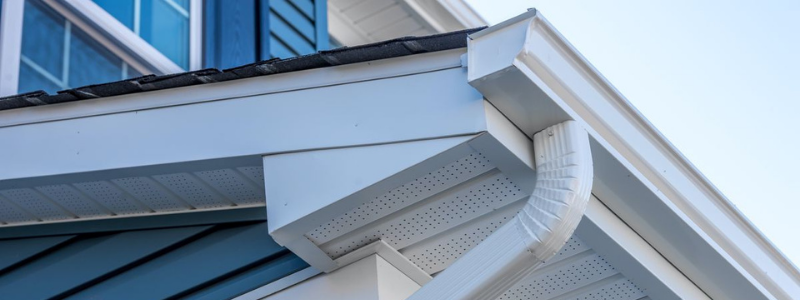
B&M Roofing: Colorado’s Best
Since 1947, B&M Roofing has been proudly serving homes throughout Colorado. Our team of expert roofers can help you decide which gutter system is best for your home and budget using extensive knowledge and best practices. We understand the challenges that roofs face in Colorado’s climate. We know how to restore and protect your roof and gutters to keep your home structurally sound. If you’ve asked yourself, “Are gutter screens worth it,” and your answer is yes, we can certainly help.
When it comes to our reputation, B&M Roofing is known for being fast, efficient, and cost-effective. Whether it’s maintenance, repair, or replacement, our roofing experts will do the job right. Contact us today for a consultation and an initial free estimate. We can provide well-backed suggestions to help you make well-informed decisions about your roof. Call us today!
Environmentally Friendly Roofs
When deciding on the details of your new roof, there are many factors to consider, especially if having an eco-friendly roof is a priority for you. Environmentally friendly roofs are typically more expensive than choosing regular asphalt shingles, but the long-term benefit of added savings and fewer repairs continue to convince homeowners to make the switch.
Many eco-friendly shingles out there in the market today are made from recycled materials such as plastic, wood, and rubber. There are also other eco-friendly alternatives that use new materials but still produce fewer emissions than traditional asphalt shingles.
Asphalt shingles are cheap to install but they’re not very sustainable. They’re almost impossible to recycle and release carcinogenic contaminants into the air when burned. On top of that, asphalt shingles require regular maintenance and repair because they’re easily susceptible to wind damage such as folds, cracks, and blisters.
Choosing to install an eco-friendly roof will significantly reduce the carbon footprint of your home and allows you to contribute to a healthier ecosystem, but those aren’t the only perks. Here are other factors that might persuade to switch to eco-friendly roofing materials:
- Recyclability
- Long lifespan
- Durability
- Improved air quality
- Reduced energy use and utility costs
When choosing the best eco-friendly roof option for your home, it’s important to know and understand when each type can be used most effectively.
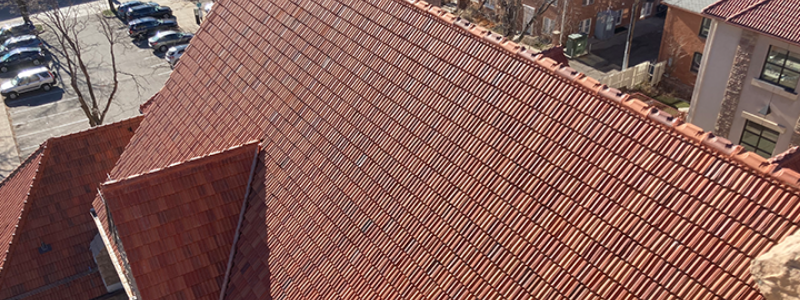
Here are the best options for environmentally friendly roofs for your home:
Cool Roofs
Cool roofs are roofs that have light-colored shingles. The light roof color reflects sun rays away from the foundation below, resulting in a reduced cooling load in the warmer months and lower utility costs. This type of roof is great if your home is exposed to large amounts of sunlight because it will prevent your home from absorbing too much heat.
Check out which roof colors are best suited for your home.
Clay Roofs
Roofing tiles made from clay are known to boost a home’s curb appeal but they can also help you save money on your power bills. Clay roofs provide adequate insulation for the home and can reflect heat from the sun. Air is free to circulate underneath clay tiles which helps regulate your rooftop temperature and maintain a comfortable temperature inside the home.
Another eco-friendly point is that clay tiles are completely recyclable if properly salvaged. They are also extremely weather-resistant and durable. However, because of its heavier weight, you must ensure a qualified and expert roofer does the installation for you. If the job is not done properly, you might be left with structural damage that can be not only expensive but dangerous as well.
Wood Shingles or Shakes
Wood shingles and shakes can easily be recycled and repurposed into new and usable products. This is why wood is an eco-friendly choice. These roofs also provide natural insulation that will help keep your home at a comfortable temperature, also making it an energy-efficient choice.
Wooden shingles or shakes are constructed with fire-resistant cedar or redwood and last between thirty to fifty years. Additionally, the authentic appearance and texture of wooden shingles can increase the home’s curb appeal. However, it’s important to note that wooden roofs require regular inspection to ensure it is free of rot and mold.
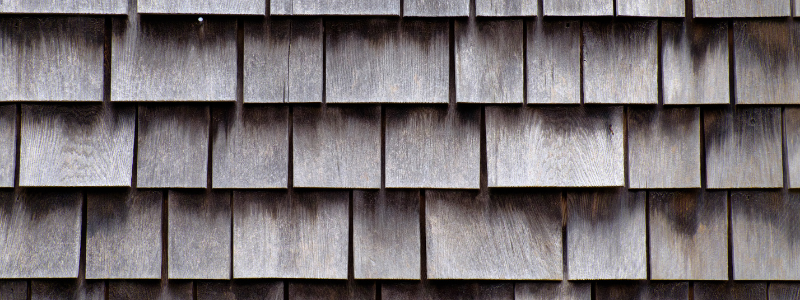
Rubber Roofing
Rubber shingles are made from recycled tires (95% recycled material) and all scraps left from manufacturing and installation are reused at the roofing material factories.
These types of roofs protect the home from heat, low temperatures, and harsh weather conditions. You can also get energy-saving perks with rubber roofing as it can insulate your home more effectively and efficiently. Since rubber shingles are highly resistant to water and ice, they are also crack-free which eliminates the chance of leakages.
Installing rubber shingles can have a higher upfront cost, but it is typically more affordable when you compare them to other eco-roofing materials. Additionally, the installation process is fairly easy and requires little to virtually no maintenance.
Metal Roofs
Metal shingles are made from at least 25% recycled material and are 100% recyclable themselves. Similar to cool roofs, metal roofs have reflective properties that deflect sunlight away from the home and can reduce cooling costs by as much as 25%.
Metal roofs are extremely durable, fire- and weather-resistant, and come with an approximate life expectancy of 50 years. Metal shingles come in a variety of alloys and styles, making them extremely versatile and they look great on any type of home. Additionally, they are 100% recyclable, giving your home that extra eco advantage.
Solar Roofing
Solar Roofing involves placing solar panels on an existing roof. Unlike metal and cool roofs, solar panels absorb sun rays and convert that energy into usable electricity.
Although the initial installation can be expensive, homeowners can expect to save thousands in utility bills throughout the roof’s lifetime.
It’s also worthy to note that the U.S federal government provides a 26% investment tax credit for home solar power systems.
The only issue that can arise with solar roofing is that it requires adequate amounts of sunlight to run efficiently. If you live in an area without widely available sunlight, solar roofing might not be the best option for you.

Green Roofs
A unique eco-friendly roofing option is non-other than a green roof. Green roofs transform the top of your home into a garden landscape. This type of roofing can provide extra cooling and insulation and can reduce the amount of rainwater runoff within your home’s exterior.
A green roof is one of the most environmentally friendly roofs available, however, it requires adequate maintenance. Plants on the roof require watering, feeding, and weeding. Poor maintenance keeping on green roofs can result in overgrowth or decay and become unsightly.
B&M Roofing Expertise
There are obvious benefits to choosing an eco-friendly roof for your home. Not only is it better for the environment. Eco-friendly roofing options tend to be cost-effective, energy-efficient, and durable.
Contact B&M roofing and request a free consultation. We are a trusted Colorado-owned company known for our commitment to excellence. Fill out this form online or call us today to start your eco-roofing project.
Most Durable Roofing Material
Colorado has three hundred days of sunshine. While sunshine is very appealing, the blazing heat and UV radiation can wear down even the most durable roofing materials. To combat Colorado’s challenging weather conditions, it is important to choose the most durable roofing material and to ensure it is all expertly installed by a roofing professional knowledgeable about Colorado’s weather challenges. Colorado’s higher altitude, air pressure, solar radiation, density, oxygen, and temperature affect the longevity of your roof.
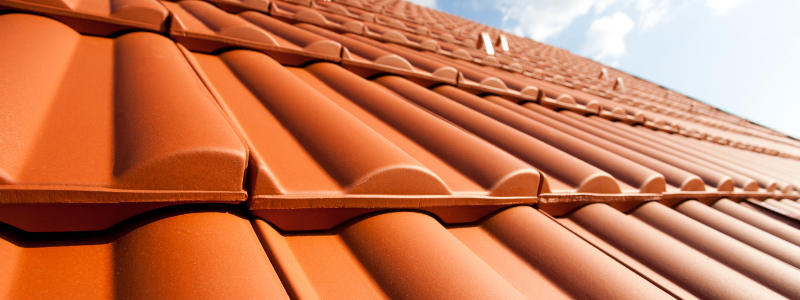
Most Durable Roofing Material Choices
The following are some of the most durable roofing materials that are recommended by our Colorado roofing specialists:
Asphalt Shingles
The lifespan of asphalt shingles is between fifteen and thirty years. Because of this and their reasonable price, they are a popular roofing choice. To ensure durability, choose shingles with a good hail rating.
Asphalt shingles are also recyclable so they don’t fill landfill sites.
Wooden Shakes
Wooden shingles or shakes last between thirty and fifty years. Wooden shakes are constructed of fire-resistant cedar or redwood. While not as durable as asphalt, they last longer. Wooden shingles are natural insulators so they get extra marks for energy efficiency.
Metal Roofing Materials
Like wooden shakes, metal roofing materials last thirty to fifty years. Most are made of steel, copper, zinc alloy, or aluminum. While a little more expensive than wooden shakes, metal roofs are significantly more durable.
Because they are impact-resistant, metal roofs are a good choice for Colorado’s climate. Metal roofs are also more maintenance-free than many other roofing materials. Metal roofs also act as natural insulators, keeping homes cooler in hot weather and warmer in Colorado winters.
Metal roofing materials are totally recyclable and are made from recycled materials.
Plastic Polymers
Plastic polymer roofing materials have a lifespan of over fifty years. While they look like slate or wooden shingles, polymer roofs are incredibly durable. They are also maintenance-free.
Plastic polymer roofing materials withstand Colorado weather challenges.
Highly energy efficient, plastic polymer manufacturers use recycled materials. Ideal for Colorado’s high rates of sunshine, plastic roofs reflect energy, keeping homes cooler in summer and warmer in winter.
Slate
A slate roof can last between seventy-five and a hundred and fifty years. Slate is the most costly and the most durable of the durable roofing materials. Slate is fireproof. The highest winds and most severe Colorado snowstorms don’t phase slate roofs. However, slate tiles can crack under the weight of snow or ice. It is vital that it be applied by a roofing specialist.
Because slate needs to be replaced so infrequently, it is much better for the environment than many other roofing materials. Slate is also naturally occurring, so no toxins are involved in the manufacturing process. The densest of all roofing materials, slate is also the best insulator.
Solar Glass
If it is properly installed and cared for, solar glass roofing will last a lifetime.
Solar glass roofing comes with a lifetime tile guarantee. It can withstand the challenges of Colorado weather.
Solar glass roofing tiles are highly energy efficient. While relatively expensive to purchase and install, solar glass often comes with a tax credit. Not only is solar glass energy efficient. It generates its own energy. Thus, it is highly sustainable.

Longevity Trends
There are certain roofing material trends that are taking commercial and residential properties by storm right now.
Metal Roofs
Metal roofs are in demand once again. They are popular because of their visual appeal, versatility, function, and durability. Metal roofs enhance the curb appeal of homes and businesses. Constructed of steel, aluminum, alloy, or copper steel roofs offer a wide variety of textures and shapes. They prevent leaks and repel snow and rain. Their longevity offsets the upfront costs. Metal roofing is some of the most durable roofing material on the market.
Asphalt Shingles
Roofing trends come and go but asphalt shingles remain another most durable roofing material. They are both flexible and affordable. They adapt to almost any weather. Thanks to technology, asphalt shingles are now available in a stunning array of styles and colors.
Roof Aesthetics
Roofs no longer blend into the background. They make a statement about the home and the owner. Homeowners are changing up their roof colors to showcase their homes. Owners choose eye-catching hues like black, gray, silver, or bronze.
Roof Coatings
Silicone roof coating—once a part of commercial buildings—has become popular in residential roofing. This material alters the roof’s appearance in just two coats. Silicone roof coatings also provide longevity as the protective coating offers leak-proofing.
Solar Energy
Solar power lightens the carbon footprint as the roofing materials are energy efficient. Moreover, the newest solar panels are smaller and less expensive. Called photovoltaic shingles these solar panels now mimic the look of traditional roofing materials.
Cool Roofing Materials
Cool roofs are a popular response to environmental issues like global warming. Constructed from energy-reflecting and energy-absorbing materials, cool roofing materials reflect and/or absorb heat in response to weather challenges.
Synthetic Materials
Eco-friendly, synthetic roofing materials are increasing. Created of recyclable materials like rubber and plastic, they can offer options in shapes, sizes, and colors. Synthetic roofing materials are very durable even in Colorado weather conditions. Mimicking slate or wooden shakes, synthetic materials are aesthetically pleasing, durable, relatively inexpensive, lightweight, and easy to install and maintain.
Green Roofing Options
Green roofs offer a way to incorporate beauty and function. Atop businesses and homes, owners have incorporated greenery by adding a rooftop garden, patio, or workspace. These rooftop spaces are very durable and protect your home from weather challenges while at the same time offering natural shade and insulation.
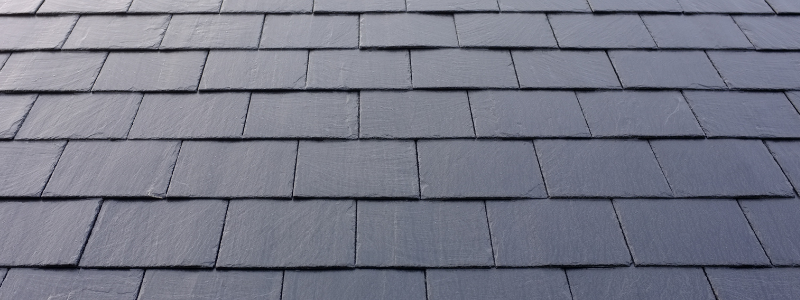
How to Make Your Roof Last Longer
Your roof is an investment in your family’s comfort. Proper maintenance will ensure that it also retains the curb appeal and structural integrity of your asset. Here are some ways to extend the longevity of your roof.
1. Avoid Power Washing
This may seem like a great way to remove grime and debris but it also removes or loosens roofing materials. Use a broom, roof rake, or leaf blower to remove dirt and moss. Better yet, have a professional clean your roof at least twice a year.
2. Check Ventilation
Poor ventilation can cause condensation and rotting wood. Mold and mildew can develop. This is dangerous to the health of your home and its occupants.
3. Keep Gutters Clean
Check gutters at least once a season. Remove debris. This will prevent water buildup and roof leaks.
4. Check Insulation
Insulation helps prevent ice dams and roof leaks. Consider installing a self-adhesive layer to protect against ice and water on your roof.
5. Protect Against Severe Weather
If you live in an area that experiences hurricanes, severe thunderstorms, buzzards, or tornadoes, fortify your roof with seal decking and ring-shank nails. Lock roof edges with metal flashing.
6. Regular Roof Inspections
Have a knowledgeable roofing professional check your roof for damage or debris at least twice a year.
Why Choose B&M Roofing?
Just as it is crucial to select durable roof materials, it is also important to choose a roofing specialist that understands Colorado weather challenges.
B&M Roofing has been a Colorado-owned company since 1947. We provide reliable, meticulous service to thousands of Colorado homes.
Licensed and insured B & M roofing specialists have a proven commitment to excellence.
Questions to Ask a Roofing Contractor
Most people only purchase a new roof a few times in their lives, so it’s normal to feel uncomfortable with the process. However, knowing how to choose a roofer can help ensure a successful investment for your residential roof repair or replacement, or commercial roofing needs. There are certain questions to ask a roofing contractor that are critical, a few of which we’ve highlighted below.
While it’s important to only trust reputable contractors who are preferably members of the Colorado Roofing Association, knowing the best questions to ask a roofer when you receive estimates will help eliminate uncertainties and flush out problems before the job.
Unfortunately, there are various tactics that unethical roofing contractors take to secure jobs and then don’t adhere to the quality of workmanship.
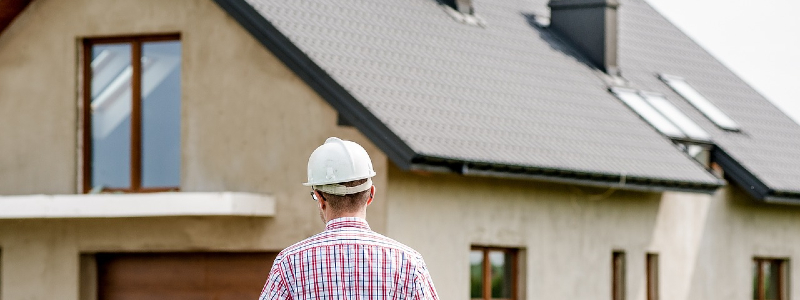
How to Choose a Roofing Contractor
Any reputable roofing contractor will answer any question you pose. Never walk away from a meeting with an estimator feeling as if you aren’t clear about any of the processes or costs of your roofing job. Roofing services are extremely important to your home or business health, not to mention they come at a high cost. Knowing the questions to ask a roofing contractor can mean the difference between a quality roof that lasts versus a quick job that will require frequent repairs.
Choosing a roofer may require some upfront homework, but it can make all the difference. For example, you should learn a little more about the components that make up a roof, so you can better understand how to apply that information to your requirements. Always be sure to do the following:
- Ask your roofer to show you photos or sketches of how certain problem areas will be handled.
- Request more information on how a roofing contractor’s process works from start to finish. You should have a solid understanding of how they operate when arriving at the job site, plus anything you should do to prepare the space for the work.
- Inquire whether your roof has any areas where structural changes should be made in order to avoid issues later.
- Discuss any maintenance tips that you can fulfill without hiring a roofing contractor. This also helps you to extend the lifetime of your roof.
- Questions to ask a roofing contractor also include any tips on whether your old roof needs to be removed completely.
- If you have ideas about moving to green living or want to be more energy-efficient, be sure to ask your roofing contractor whether or not they can supply recycled materials, and whether their end product (new roof) is Energy Star rated.
For quality Colorado roofing services from trusted experts, contact us directly at (303) 443-5843 to set up your free estimate.
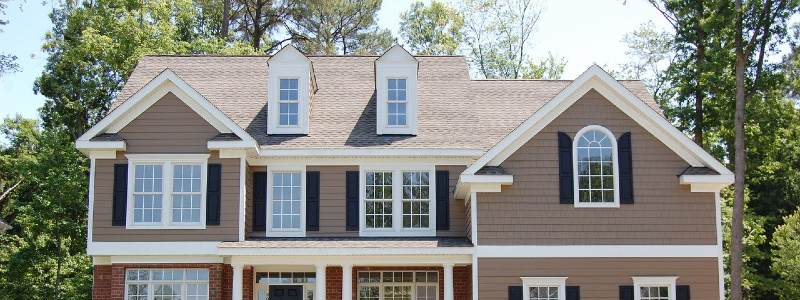
Best Questions to Ask a Roofing Contractor
The best questions to ask a roofing contractor before hiring include:
-
Are you licensed and insured?
- Avoid fly-by-night storm chasers and unskilled roofers by only selecting companies who are licensed. Protect your home and your liability by working with contractors who carry general liability insurance to protect your home and worker’s compensation insurance to protect you if a worker is injured on the job.
-
Do you use subcontractors?
- If a roofing company doesn’t use its own employees for the job, there’s no guarantee they’ll be skilled, licensed, or insured if they’re not employees of the company you deal with.
-
How do you clean up your job site?
- Replacing a roof is only half of the job. Removing layers of shingles if necessary as well as sheet metal scraps, nails, and pieces of roofing material can make or break a roofing project. Learn how your company plans to remove it as well as protect your landscaping from debris.
-
Can I contact references?
- Any time a roofing company can’t offer names of satisfied customers who are willing to vouch for it, it’s a red flag.
-
Do you provide a warranty?
- Roofing materials are covered by manufacturers’ warranties, but only if installed correctly. Your roofing contractor should warranty its labor to provide you with full protection.
-
Do you offer a written estimate?
- Your written contract should include costs of materials, labor and necessary building permits, workmanship and materials warranties, and proof of the contractor’s license.
-
Do the estimates you provide detail my current issues?
- Inquire whether or not you should expect supporting materials like photos or sketches with the estimates. At a minimum, a trusted roofing contractor will be quick to point out specific details on your roofing repair or replacement needs.
-
How long will my project take?
- Roofing work can feel like a huge undertaking for most homeowners. It’s a good idea to get an ETA for completion on your roof project. As mentioned above, you should also get an idea of things you should do to prep the area for your contractors. Get a completion date also help you to evaluate if roofers are incredibly busy, as some may decide to rush projects (which always come at an expense to homeowners and commercial building managers).
-
What happens during unforeseen weather changes?
- Good questions to ask a roofing contractor usually begin with weather. Understandably, you wouldn’t want your home to be exposed to harsh weather conditions or the elements. Your roofing contractor should be prepared for various scenarios.
-
What do you recommend for roofing materials?
- Most real estate owners will have a preference for roofing materials. Believe it or not, though, the roofing industry changes regularly and new materials are often introduced each year. Get some advice on the latest technologies being used, and request an assessment for the most beneficial type of roofing material for your home or commercial building. After all, roofs are not just made to improve home health and protect you, they are also aesthetically pleasing too.
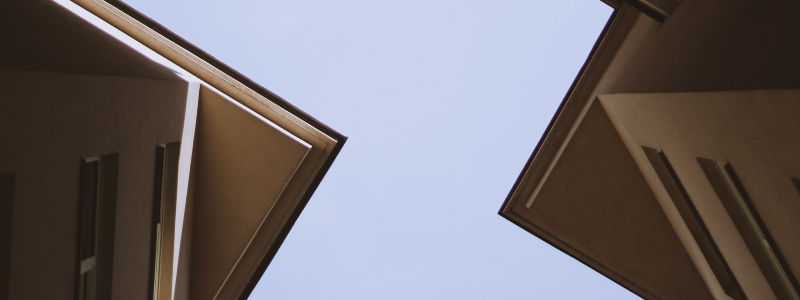
While these are the best questions to ask a roofer before you hire one, they’re not the only ones your estimator should be able to answer. Questions about timing, length of the job, and logistics should all be considered.
Ready to hire a reputable roofer with over 70 years of experience? Contact B&M Roofing of Colorado online or by calling (303) 443-5843.





